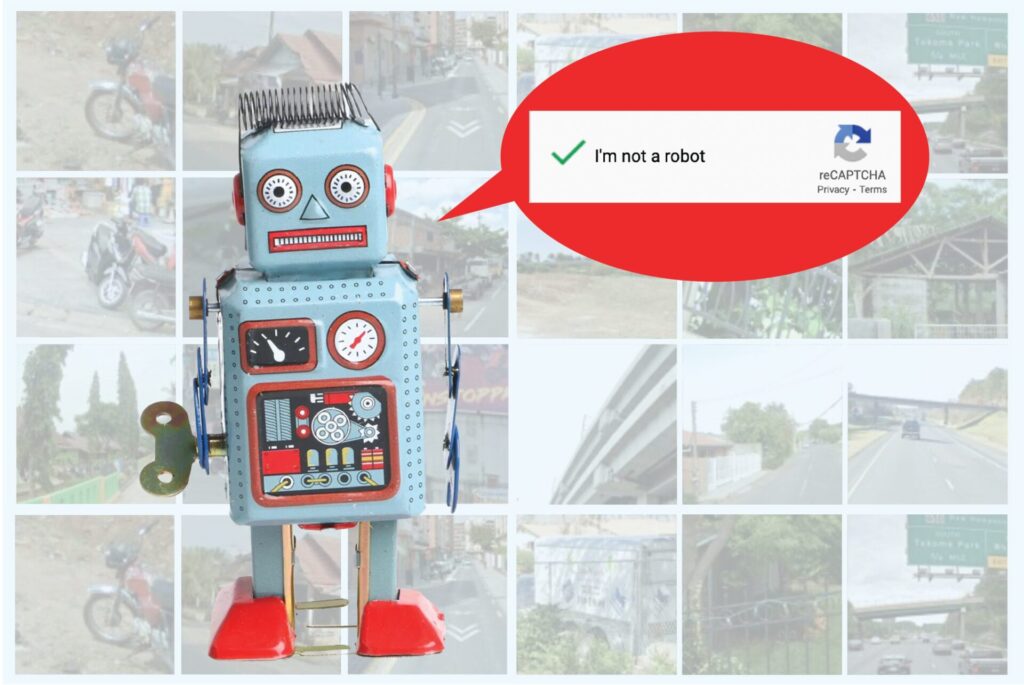Ever been stuck staring at a blurry image of squiggly lines, desperately trying to decipher letters before you can access a website? If so, you’ve encountered the notorious CAPTCHA – a digital gatekeeper designed to separate humans from pesky robots (or so it claims). But have you ever stopped to wonder, what exactly is a CAPTCHA, and why are we forced to solve these cryptic puzzles just to browse the internet? Buckle up, because we’re diving deep into the world of CAPTCHAs, exploring their history, how they work, and whether they’re still relevant in today’s digital landscape.

A Brief History of CAPTCHAs: From Simple Text to Advanced Challenges
The year is 2000. The internet is booming, but with this growth comes a rise in malicious bots. These automated programs can wreak havoc, from spamming comment sections to illegally signing up for accounts. Enter CAPTCHA, an acronym for “Completely Automated Public Turing test to tell Computers and Humans Apart.” The first CAPTCHAs were simple – distorted text that humans could easily read, but posed a challenge for rudimentary bots.
Over time, CAPTCHAs have evolved. We’ve seen the rise of image recognition CAPTCHAs, where you have to identify objects in a picture. More recently, “invisible CAPTCHAs” have emerged, analyzing your browsing behavior to determine if you’re human without requiring you to solve a puzzle explicitly.

Demystifying the CAPTCHA: How Does it Work?
So, how does a CAPTCHA know if you’re human or not? Traditional text-based CAPTCHAs rely on the fact that while computers can recognize patterns, they struggle to understand the nuances of human language – like interpreting blurry fonts or overlapping characters. That’s where the distorted text comes in. For an image recognition CAPTCHA, the test involves identifying objects in a picture. These objects are chosen to be recognizable to humans, but difficult for bots to distinguish from background noise.
The newer “invisible CAPTCHAs” take a different approach. They analyze your browsing behavior, looking for patterns that suggest human activity. This can include things like how you move your mouse, how long you stay on a page, or even how you type. If your behavior aligns with what’s expected from a human user, you’ll be granted access without ever encountering a puzzle.
Why Do We Have CAPTCHAs? The Battle Against Bots
The primary reason for CAPTCHAs is to prevent bots from infiltrating websites. Imagine a website where users can register for exclusive discounts or limited-edition products. Bots could exploit this system, creating fake accounts and grabbing all the goodies before real people have a chance. CAPTCHAs act as a security barrier, making it more difficult for bots to automate these actions.
Beyond protecting websites from spam and fraudulent activity, CAPTCHAs can also be used to gather valuable data. Remember those distorted text CAPTCHAs? Well, by analyzing the words people mistype, developers can improve the accuracy of optical character recognition (OCR) technology, which is used for tasks like converting scanned documents into digital text.
The CAPTCHA Conundrum: Are They Still Necessary?
Here’s the thing: CAPTCHAs can be frustrating. They can be difficult to read, especially for people with visual impairments. And sometimes, you can get stuck in an endless loop of typing the same squiggly line over and over again, questioning your own humanity (don’t worry, it happens to the best of us!).
The rise of more sophisticated bots and the development of “invisible CAPTCHAs” raise the question: are traditional CAPTCHAs becoming obsolete? Perhaps. While they still have a role to play in certain situations, the future might involve more advanced methods of bot detection that don’t rely on human frustration.
Beyond CAPTCHAs: The Future of Bot Detection
The fight against bots is an ongoing battle. As technology advances, so do the bots. Looking forward, we might see a shift towards more sophisticated bot detection methods, like analyzing user behavior patterns or utilizing artificial intelligence to identify suspicious activity. The goal is to create a seamless user experience where websites can distinguish humans from bots without resorting to frustrating puzzles.
Conclusion: The CAPTCHA: A Necessary Nuisance (for Now)
CAPTCHAs have become a ubiquitous part of our online experience. While they can be frustrating at times, they serve a valuable purpose in protecting websites from malicious bots. Looking ahead, we might see a future where CAPTCHAs become a relic of the past, replaced by more advanced methods of bot detection. But for now, the next time you encounter a blurry image of squiggly lines, take a deep breath, decipher the code, and remember – you are still human (hopefully!).
Read Also
- Confidence: How to Trick Your Mind Into Feeling Confident
- “Wildfire” by Hannah Grace
- A Guide to Popular Christian Symbols
- How to create a relaxing self-care routine at home
- “The Kiss Quotient” by Helen Hoang
Frequently Asked Questions (FAQs) about CAPTCHAs
Here are some of the most common questions people ask about CAPTCHAs:
1. Why do I sometimes get a CAPTCHA even though I’m clearly human?
There are a few reasons for this. Maybe your browsing behavior triggered a red flag in the system, or perhaps the website is experiencing a high volume of traffic and wants to be extra cautious. Additionally, some CAPTCHAs are designed to learn from user input, so if you mistyped a word in a previous attempt, it might adjust the difficulty level for future tries.
2. Are there any accessibility options for people with visual impairments?
Yes! Many CAPTCHAs offer alternative options, such as an audio version where you have to listen to a sequence of numbers or letters and type them in. Additionally, some websites allow you to request an audio CAPTCHA by default.
3. What happens if I can’t solve a CAPTCHA?
Don’t worry! Most websites will give you multiple attempts to solve the CAPTCHA. If you’re still having trouble, there might be a “refresh” button to generate a new one, or you might be able to contact the website directly for assistance.
4. Are there any ethical concerns surrounding CAPTCHAs?
One concern is the potential exploitation of human labor. Some CAPTCHA systems use user input to train AI models, which raises questions about whether this work is being done fairly and ethically.
5. What’s the future of CAPTCHAs?
The future of CAPTCHAs likely involves a shift towards more sophisticated bot detection methods that don’t rely on human input. These methods might analyze user behavior patterns or utilize artificial intelligence to identify suspicious activity. The goal is to create a seamless user experience where websites can distinguish humans from bots without resorting to frustrating puzzles.
Hopefully, this blog post has shed some light on the curious case of CAPTCHAs. So, the next time you encounter one, remember – it’s just a small hurdle designed to keep the internet a safe and secure place for humans (and hopefully, some adorable cat videos too!).



yeah it always annoying if you wanna sign up it says very if you are not a robot lol 😂💔💔💔